See How A Shot From Pixar's 'Soul' Evolves From Storyboard To The Final Animation
Pixar's Soul will be arriving on Disney+ on Christmas Day instead of getting the theatrical release that we all were hoping for at some point. That's truly disappointing, because the animation in this movie is absolutely stunning, from the photorealistic New York City to the ethereal planes of The Great Before and The Great Beyond.
If you'd like to see how a shot evolves from the very basic early storyboard drawings to the incredibly detailed final animation, we have a series of images showing how a single shot progresses during Pixar's production process.
Pixar's Soul Shot Evolution
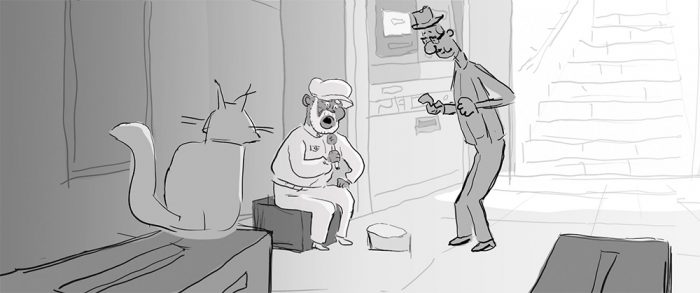
Every shot in a Pixar movie begins with a storyboard like this. Sometimes the drawings are even more simple than this, but this one done by story artist Jamie Baker has a number of details included. This sequence involves Joe Gardner (voiced by Jamie Foxx) watching a busker performing in a New York City subway station as a cat looks on, and there were around 1,341 storyboards used to plan this entire scene.
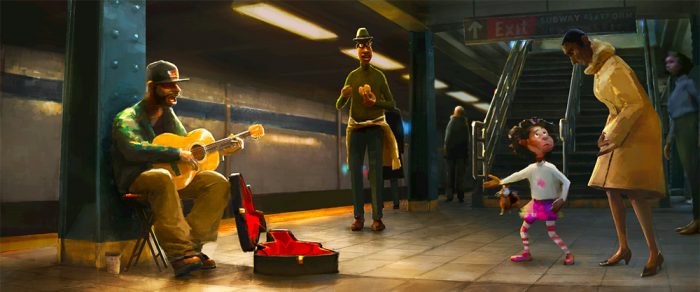
Storyboards are used to help plan the progression of a scene with regards to the story. Once that is determined, concept art is created to start exploring
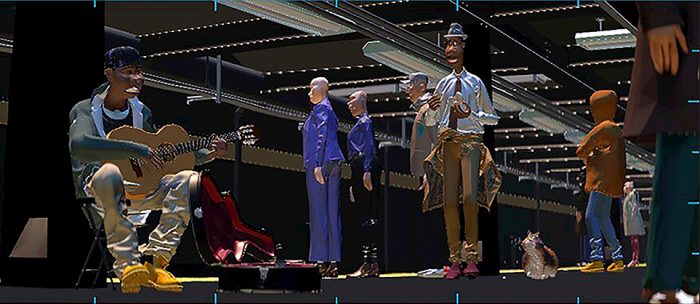
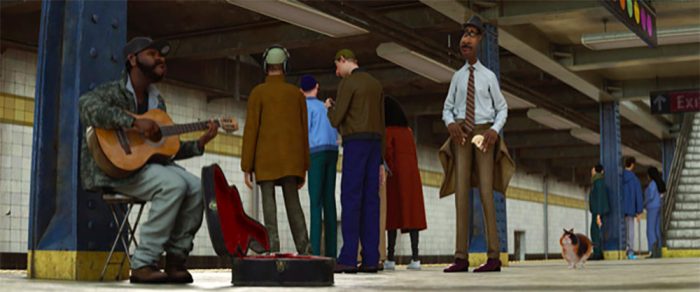
The actual animation phase of production is where the physical and emotional performance starts to give the shot some life. This is where the detailed facial expressions and body movement are added to a scene. You'll notice that Pixar describes the previous phase as "suggested" layout and recorded dialogue, because even when a shot reaches this moment, animators might figure out that certain elements need to be reconfigured in order to make a shot work. This includes the movement in the background, where you can see that the characters waiting for the train have changed.
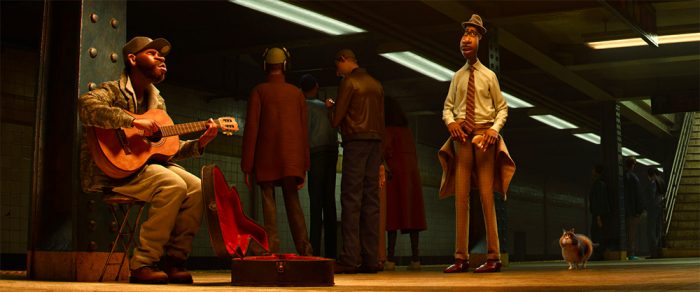
Here's the completed shot with all the detail you're used to seeing in the final cut of a Pixar movie. When you compare this image to the previous one, you'll see that the lighting gives the scene a completely different visual style. The lighting has made the scene feel so much warmer. These light sources not only come from the lights within a scene's setting, but sometimes also from off-camera in the virtual set.
Pixar tries to be as realistic as possible with lighting, but sometimes external sources are needed in order to assist with the focus of the story. For example, you'll see the lighting makes Joe and the busker much brighter while the background characters are in more dim lighting. But even so, you can still see the textures that have been added in the background, such as the slight shine on a subway rider's leather coat.
***
For more from Pixar's Soul, be sure to check out our reaction to roughly 40 minutes of footage that was shown to us by Pixar earlier this year. You can also get some insight into the making of the movie with our report from Pixar's special press presentation. We'll have more on Pixar's Soul in the weeks leading up to the film's release at Christmas, so stay tuned.
